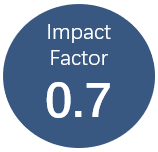Japanese infrastructure investment in Southeast Asia
Vol 3, Issue 1, 2019
VIEWS - 1932 (Abstract) 842 (PDF)
Abstract
Japan’s investment in the domestic construction industry has fallen to less than half its peak in 1992. Given the country’s declining population, Japanese construction companies must go global to remain profitable. To what extent the Japanese government and Japanese companies can contribute to meeting the growing infrastructure needs in the region is unclear as Japanese companies have long been operating primarily in Japan. The Japanese government has in recent years passed a series of new laws that encourage private sector participation in financing, building and operating public infrastructure. Through involvement in such public projects, Japanese companies have developed the skills and technologies to build a variety of infrastructures that are resilient to natural disasters and adaptable to various geographical conditions and social and economic development. But the major challenge for Japanese companies is to transform their business model drastically from one that relies on the domestic market to one that contributes to the social and economic development of third countries.
Keywords
Full Text:
PDFDOI: https://doi.org/10.24294/jipd.v3i1.1116
Refbacks
- There are currently no refbacks.
Copyright (c) 2019 Tomoo Kikuchi

This work is licensed under a Creative Commons Attribution-NonCommercial 4.0 International License.

This site is licensed under a Creative Commons Attribution 4.0 International License.










